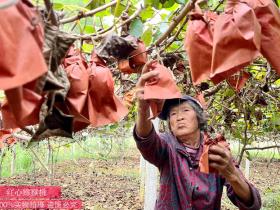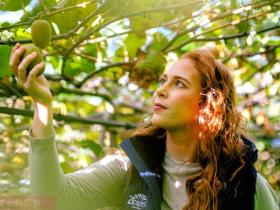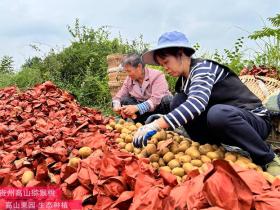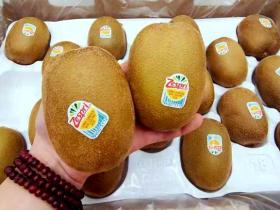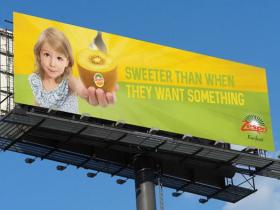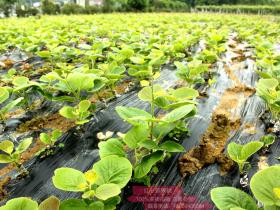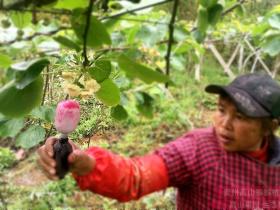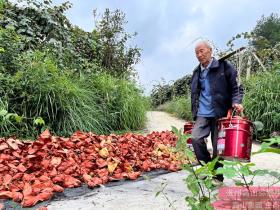Kiwifruit
Actinidia deliciosa
A late-comer on the international market, the kiwifruit long identified as (Actinidia chinensis Planch.), was formerly placed in the family Dilleniaceae; is now set apart in Actinidiaceae which includes only two other genera. In the August 1986 issue of HortScience (Vol. 21 #4: 927), there appears an announcement that China's leading authority on this fruit has renamed the stiff-haired form (which includes the kiwifruit) A. deliciosa (A. Chevalier) C.F. Liang et A.R. Ferguson var. deliciosa, and has retained A. chinensis for the smooth-skinned form. The Chinese name, yang tao, meaning "strawberry peach", was replaced by Europeans with the descriptive term, Chinese gooseberry (because of the flavor and color of the flesh). In 1962, New Zealand growers began calling it "kiwifruit" to give it more market appeal, and this name has been widely accepted and publicized despite the fact that it is strictly artificial and non-traditional. It was commercially adopted as the trade name in 1974. There are a few little-used colloquial names such as Ichang gooseberry, monkey peach and sheep peach.
Kiwifruit
Plate XL: KIWIFRUIT, Actinidia chinensisDescription
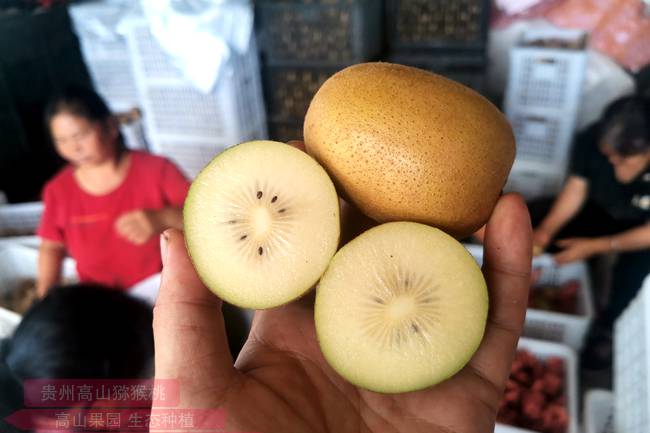
▲yellow kiwi plants
猕猴桃是国际市场上后来出现的一种猕猴桃,长期以来被认为是猕猴桃(猕猴桃),它以前被归入双子科;现在被划分为猕猴桃科,只包括另外两个属。在1986年8月出版的《HortScience》(第21卷第4期:927页)上,有一则消息称,中国对这种水果的领导权威已将硬毛形式(包括猕猴桃)改名为A.deliciosa(A.Chevalier)C.F.Liang et A.R.Ferguson var.deliciosa,并保留了中国的光滑皮肤形式。中文名称yang tao,意思是“草莓桃”,后来被欧洲人用描述性的术语“中国醋栗”取代(因为醋栗果肉的味道和颜色)。1962年,新西兰种植者开始称其为“猕猴桃”,以提高其市场吸引力,尽管这一名称是严格人工和非传统的,但它已被广泛接受和宣传。1974年,它被商业上采用为商品名。有一些很少使用的口语名称,如宜昌醋栗、猴桃和羊桃。
猕猴桃
盘子XL:猕猴桃、猕猴桃说明
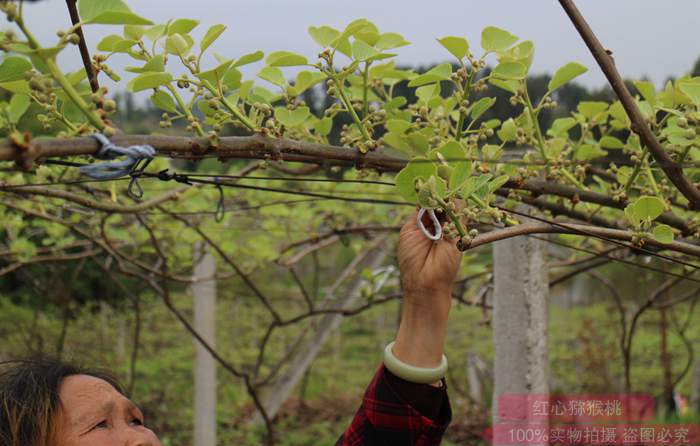
▲Kiwifruit planting▲
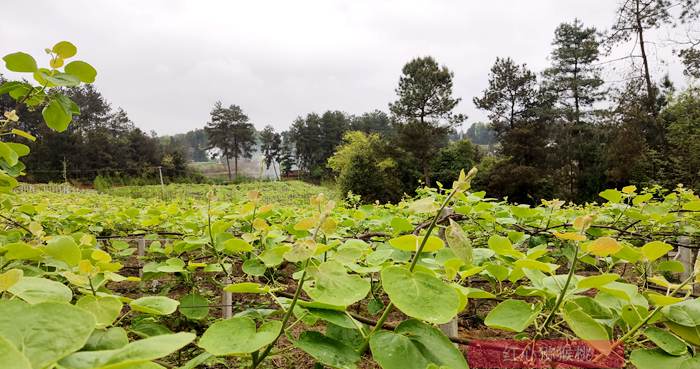
▲Kiwi orchard▲
The kiwifruit is borne on a vigorous, woody, twining vine or climbing shrub reaching 30 ft (9 m). Its alternate, long-petioled, deciduous leaves are oval to nearly circular, cordate at the base, 3 to 5 in (7.5-12.5 cm) long. Young leaves and shoots are coated with red hairs; mature leaves are dark-green and hairless on the upper surface, downy-white with prominent, light-colored veins beneath. The fragrant, dioecious or bisexual flowers, borne singly or in 3's in the leaf axils, are 5- to 6-petalled, white at first, changing to buff-yellow, 1 to 2 in (2.5-5 cm) broad, and both sexes have central tufts of many stamens though those of the female flowers bear no viable pollen. The oval, ovoid, or oblong fruit, up to 2 1/2 in (6.25 cm) long, with russet-brown skin densely covered with short, stiff brown hairs, is capped at the base with a prominent, 5-pointed calyx when young but this shrivels and dehisce from the mature fruit while 5 small sepals persist at the apex. The flesh, firm until fully ripe, is glistening, juicy and luscious, bright-green, or sometimes yellow, brownish or off-white, except for the white, succulent center from which radiate many fine, pale lines. Between these lines are scattered minute dark-purple or nearly black seeds, unnoticeable in eating. Cross-sections are very attractive. In some inferior types, the central core is fibrous or even woody. The flavor is subacid to quite acid, somewhat like that of the gooseberry with a suggestion of strawberry.
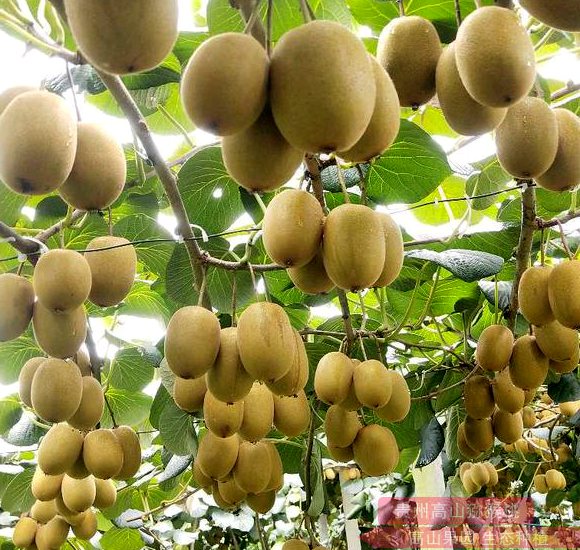
▲sun gold kiwi plants
猕猴桃生长在高达30英尺(9米)的木质缠绕藤蔓或攀缘灌木上。其互生的长叶柄落叶为椭圆形至近圆形,基部心形,长3至5英寸(7.5-12.5厘米)。幼叶和嫩枝上覆盖着红色的毛;成熟叶片深绿色,上表面无毛,绒毛状白色,下面有突出的浅色叶脉。芳香、雌雄异株或两性花,单生或叶腋3分生,有5到6瓣,最初为白色,变为浅黄色,宽1到2英寸(2.5-5厘米),两性都有许多雄蕊的中央簇生簇,尽管雌花没有活花粉。椭圆形、卵圆形或长圆形果实,长2.1/2英寸(6.25厘米),黄褐色皮肤,密被短而硬的棕色毛发,幼时基部有一个突出的5尖花萼,但从成熟果实上枯萎和开裂,而顶端有5个小萼片。果肉坚硬直至完全成熟,光泽、多汁、甘美、亮绿色,有时为黄色、褐色或灰白色,除了白色多汁中心外,中心放射出许多细小、苍白的线条。在这些线之间散布着微小的深紫色或接近黑色的种子,在食用时看不到。横截面非常吸引人。在一些亚型中,中心核为纤维状甚至木质。味道从微酸到很酸,有点像醋栗,有点像草莓。
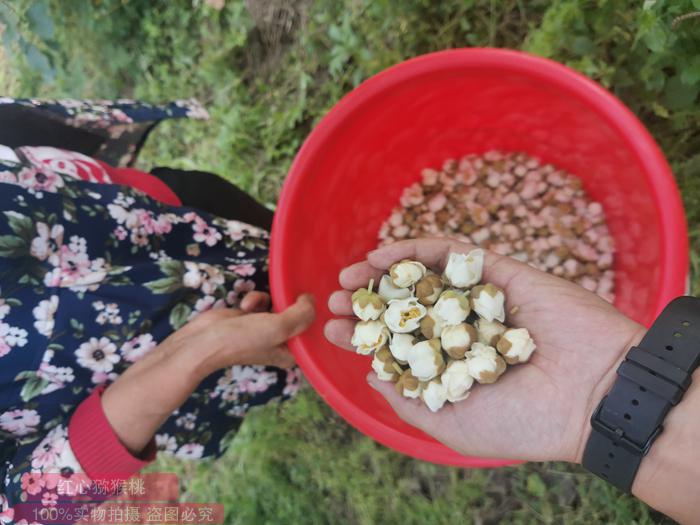
▲Kiwi pollen▲
Origin and Distribution
This interesting species is native to the provinces of Hupeh, Szechuan, Kiangsi and Fukien in the Yangtze Valley of northern China–latitude 31º N–and Zhejiang Province on the coast of eastern China. It was cultivated on a small scale at least 300 years ago, but still today most of the 1,000-ton crop is derived from wild vines scattered over 33 of the 48 counties of Zhejiang. The plants may be seen climbing tall trees or, near Lung to ping, Hupeh, sprawling over low scrub or rocks exposed to strong northeast winds and bearing heavily. The Chinese have never shown much interest in exploiting the fruit. Because of the dense population, there is little room for expansion of the industry. Nevertheless, trial shipments of canned fruits were made to West Germany in 1980.
▲golden kiwi plants
起源和分布
这种有趣的物种原产于中国北方长江流域(北纬31ºN)的湖北、四川、江西和福建省以及中国东部沿海的浙江省。至少在300年前,它是小规模种植的,但直到今天,1000吨作物中的大部分来自分布在浙江48个县中33个县的野生藤蔓。人们可以看到这些植物攀爬高大的树木,或者在湖北省隆平市附近的低矮灌木丛或岩石上蔓延,这些灌木丛或岩石暴露在东北大风中,承受着沉重的压力。中国人从来没有对开发这种水果表现出太大的兴趣。由于人口稠密,该行业几乎没有扩张空间。然而,1980年,罐装水果被试运到西德。
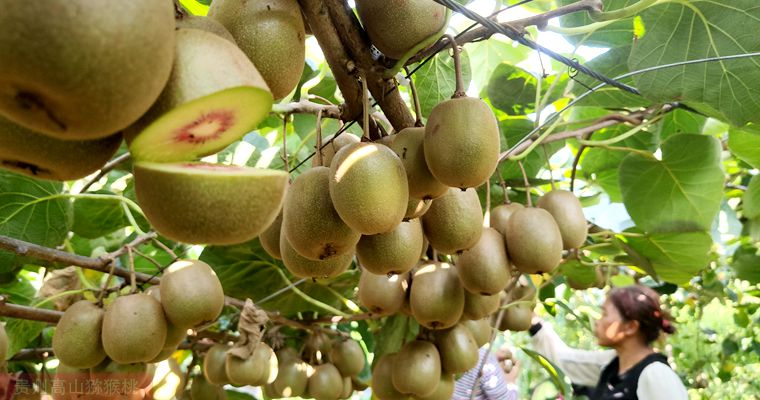
▲redkiwifruit▲
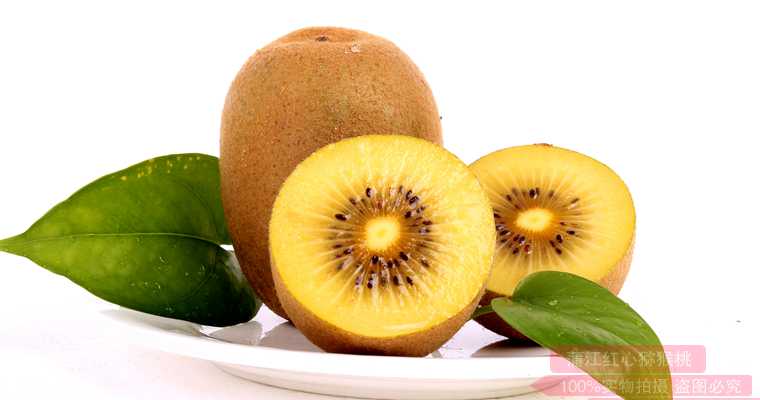
▲Golden kiwifruit▲
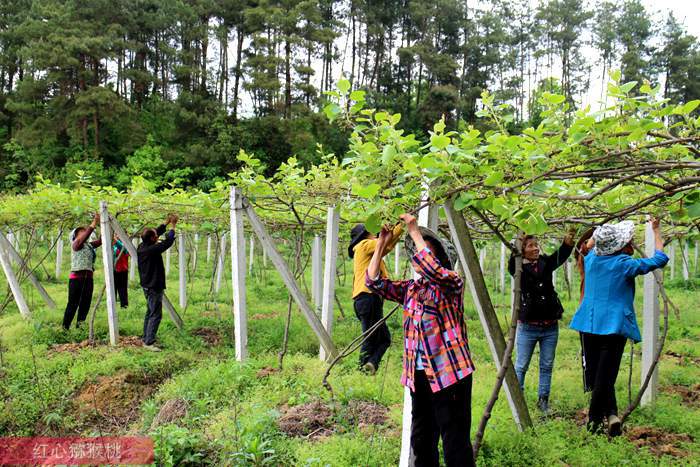
▲golden kiwi tree
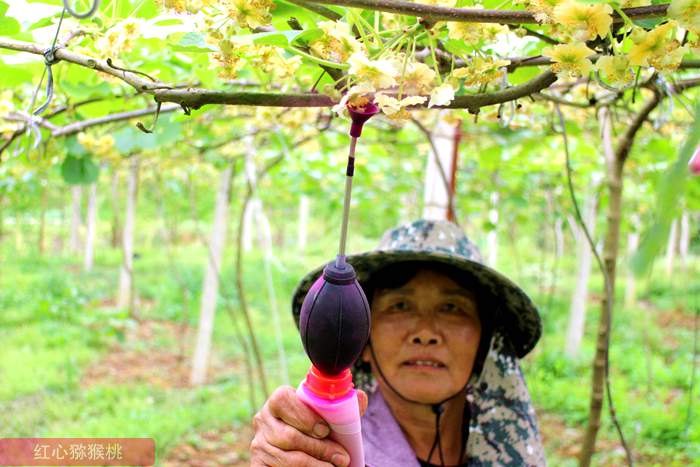
▲Kiwi pollination▲
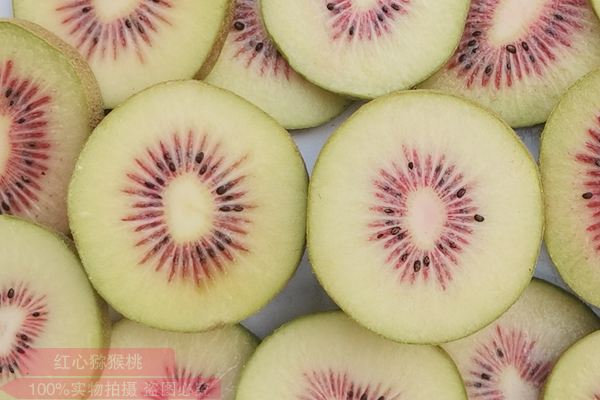
▲redkiwifruit▲

▲Kiwi sapling▲
The United States Department of Agriculture received seeds from Consul-General Wilcox in Hankow in 1904 (P.I. 11629, 11630) and the resulting vines were fruiting at the Plant Introduction Field Station at Chico, California in 1910. In 1905, a Rev. Hugh White sent in seeds from Kiangsi (P.I. 18535). E.H. Wilson supplied seeds from western Hupeh and Szechuan (P.I. 21781). In 1917, the agricultural explorer, Frank Meyer, sent back to Washington seeds from fruits he found growing near Lung to ping, Hupeh, ranging in size from "that of a gooseberry to a good-sized plum" (P.I. 45946). A plant from this introduction was given to Mr. William Hertrich of San Gabriel, California. It had perfect flowers and bore fruit "of good size and quality." Mr. Hertrich reproduced it by cuttings and in 1919 supplied some of the plants to the Station at Chico (P.I. 46864). In 1935, a New Zealand grower sent plants of a large-fruited kiwifruit (later named 'Hayward' in New Zealand). One of the plants was reported as still flourishing and fruiting–400 lbs (160 kg) annually–in 1982. After cultural techniques were developed in the 1960's, two California growers imported several thousands of plants from New Zealand. Special kiwifruit nurseries were established in 1966 and, by 1970, there were 40 acres (20.25 ha) devoted to this crop. By 1977 there were over 2,000 acres (800 ha) planted with kiwifruit vines but only 10% of the plants had reached bearing age. In 1982, there were about 1,000 small commercial farms in the state. In 1984, kiwifruit groves in California totalled 6,000 acres (2,040 ha). Most of the crop, worth $18,000,000 to the growers, is sold locally, but some has been shipped to Japan and to the Netherlands. The trade association, Kiwi Growers of California, was organized in 1972 and incorporated in 1975 to sponsor research and exchange and publish information. Nationwide publicity and marketing is handled by Blue Anchor, Inc., the California Fruit Exchange, greatly stimulating demand despite the high retail price of the fruits. The California Kiwifruit Administration Committee has set rigid quality standards, preventing the shipping of "unclassified" grade.
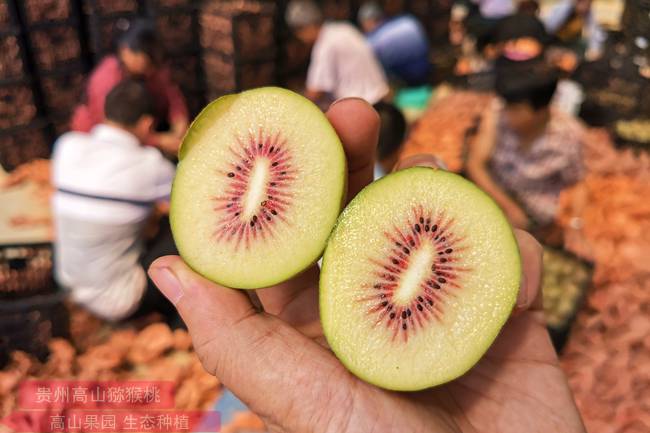
▲red kiwi tree
1904年,美国农业部从汉口的总领事威尔科克斯那里收到了种子(P.I.11629、11630),1910年,由此产生的葡萄藤在加利福尼亚州奇科的植物引种田间站结出果实。1905年,休·怀特牧师从江西送来了种子(P.I.18535)。E、 威尔逊从湖北西部和四川提供种子(P.I.21781)。1917年,农业探险家弗兰克·迈耶(Frank Meyer)将他发现生长在湖北省平平市隆附近的水果的种子送回华盛顿,大小从“醋栗到大小合适的李子”(P.I.45946)。来自加州圣加布里埃尔的威廉·赫特里奇先生收到了引种的一株植物。它开着完美的花,结出“大小和质量都很好”的果实。赫特里希先生通过扦插繁殖了它,并于1919年向奇科的空间站提供了一些植物(P.I.46864)。1935年,一位新西兰种植者送来了一种硕果猕猴桃(后来在新西兰被称为“海沃德”)的植株。1982年,据报道,其中一种植物仍在茁壮成长并结出果实——每年400磅(160公斤)。在20世纪60年代开发出栽培技术后,两名加利福尼亚种植者从新西兰进口了数千种植物。1966年建立了特殊的猕猴桃苗圃,到1970年,有40英亩(20.25公顷)用于种植这种作物。到1977年,有超过2000英亩(800公顷)的猕猴桃藤种植,但只有10%的植物达到了结果年龄。1982年,该州约有1000个小型商业农场。1984年,加利福尼亚州的猕猴桃林总面积为6000英亩(2040公顷)。大部分农作物价值1800万美元,在当地出售,但一些已经运往日本和荷兰。加州猕猴桃种植者贸易协会成立于1972年,1975年成立,旨在赞助研究、交流和发布信息。加州水果交易所Blue Anchor,Inc.负责全国范围内的宣传和营销,尽管水果零售价格较高,但极大地刺激了需求。加州猕猴桃管理委员会制定了严格的质量标准,防止运输“未分类”等级的猕猴桃。

▲Kiwi packaging▲
The Fruit and Fruit Technology Research Institute of Stellenbosch, South Africa, obtained budwood of New Zealand cultivars in 1960 and experimental plantings were made in a number of areas around the country. The success of the vines in the northeastern Transvaal inspired the installment of a large plantation of mostly seedlings, some plants from cuttings, at Chiremba in the lower Vumba based on New Zealand and California selections. At this location, the altitude is 3,280 ft (1,000 m) and the annual rainfall is 60 in (152 cm). The mean temperatures in southern Cape areas are close to those at Sacramento, California. However, there are great extremes in South African weather and occasionally very high day temperatures which may cause sunburn on exposed fruits. Nevertheless, the South African Kiwifruit Association was formed in 1981 at the University of Natal with expectations of developing successful cultivation.
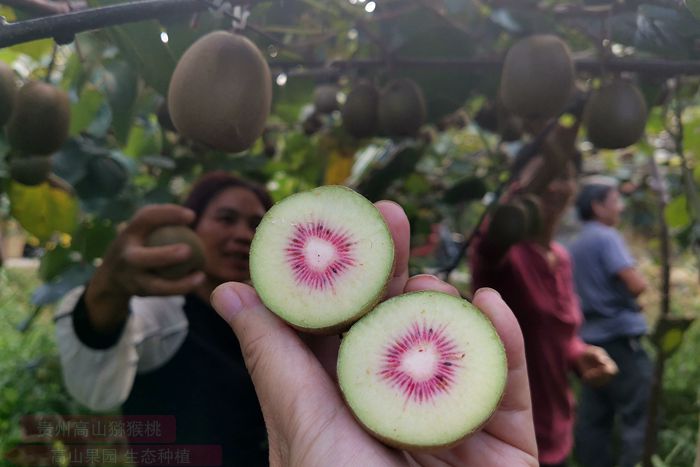
▲红心猕猴桃▲
南非Stellenbosch水果和水果技术研究所于1960年获得了新西兰品种的芽木,并在全国多个地区进行了实验种植。特兰斯瓦尔东北部葡萄园的成功激发了人们在Vumba下游的Chiremba,根据新西兰和加利福尼亚州的选择,安装了一个以幼苗为主的大型种植园,其中一些植物来自插条。在这个位置,海拔3280英尺(1000米),年降雨量为60英寸(152厘米)。南开普省地区的平均温度接近加利福尼亚州萨克拉门托。然而,南非的天气非常极端,有时白天温度很高,可能会导致裸露的水果晒伤。尽管如此,南非猕猴桃协会于1981年在纳塔尔大学成立,旨在发展成功的种植。
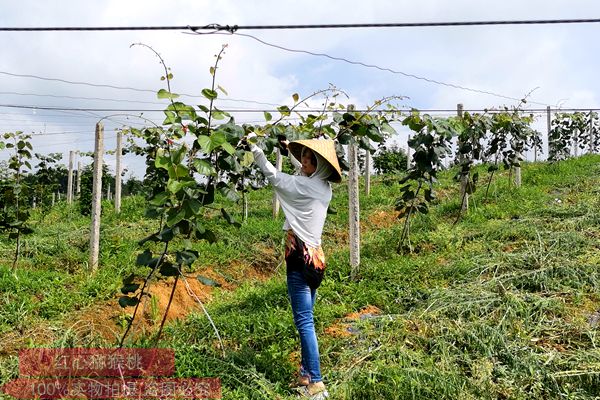
▲Kiwi planting▲
The kiwifruit was already being grown in Cambodia, Vietnam and southern Laos, France, Spain, Belgium, and Italy where plantings were first made in the late 1960's and commercial growing started in the late 1970's. Italy advanced to third place in world production by 1983, with a crop of 6,000 tons from 4,800 acres (2,000 ha). Over one-half of Italy's crop is exported to France and other European countries.
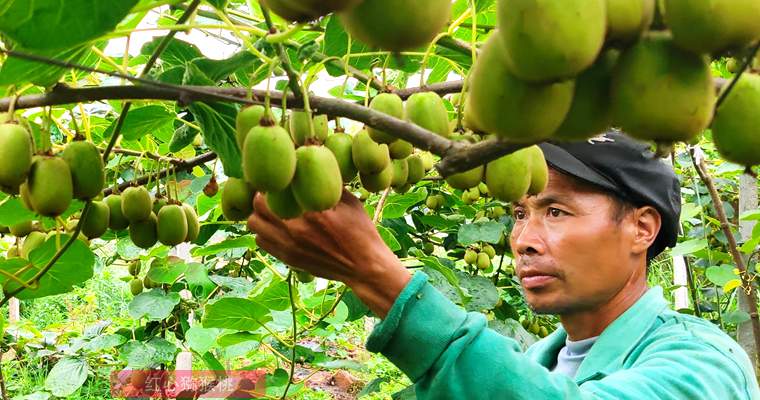
▲redkiwifruit▲
猕猴桃已经在柬埔寨、越南、老挝南部、法国、西班牙、比利时和意大利种植,60年代末首次种植,70年代末开始商业种植。到1983年,意大利的产量从4800英亩(2000公顷)提高到了6000吨,居世界第三位。意大利一半以上的作物出口到法国和其他欧洲国家。
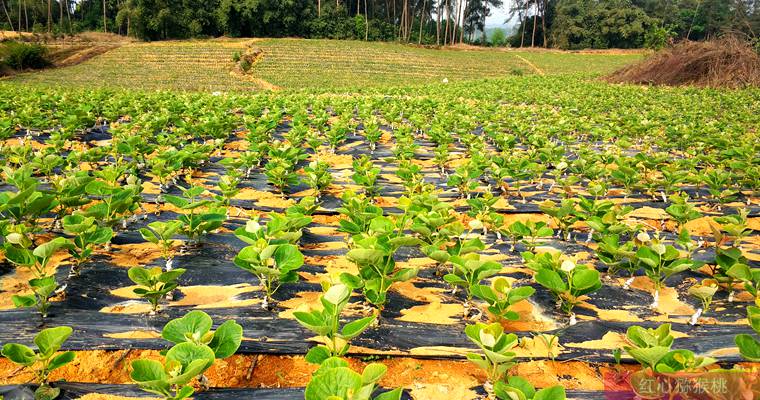
▲Kiwi seedlings▲
French interest in the kiwifruit has been stimulated by the low returns from apple-growing. By 1971, there were small plantings scattered around southwestern and southeastern areas of the country–valleys of the Garonne, Dordogne, Rhone and Loire rivers–totalling about 123 acres (50 ha). Greece is now producing kiwifruits for export to other European countries, filling the seasonal gap when fruits from New Zealand are not available. A recent development is the raising of kiwifruits in greenhouses in the Channel Islands, especially as an alternative to tomatoes suffering from European competition.

▲Golden kiwifruit▲
法国对猕猴桃的兴趣受到了苹果种植回报率低的刺激。到1971年,该国西南部和东南部地区——加龙河、多尔多涅河、罗纳河和卢瓦尔河流域——共有约123英亩(50公顷)的小型种植园。希腊现在生产猕猴桃出口到其他欧洲国家,填补了新西兰水果供应不足的季节性缺口。最近的一个发展是在海峡群岛的温室中种植猕猴桃,特别是作为受欧洲竞争影响的番茄的替代品。
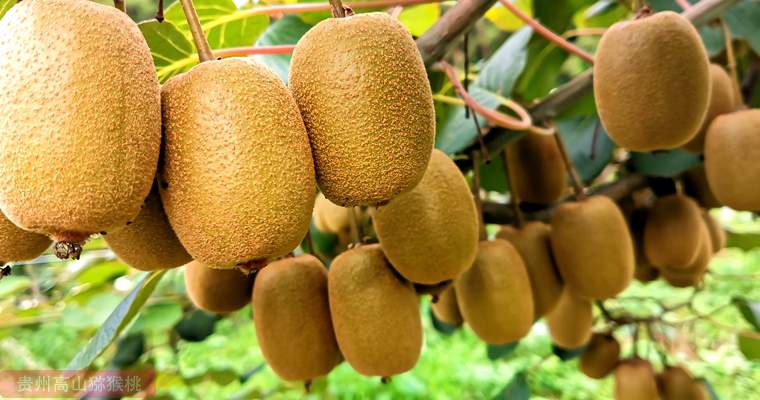
▲kiwifruit▲
The vine was introduced into the Philippines at Baguio in 1923. It succeeds there only above 3,280 ft (1,000 m) and has not been exploited. Large plantings are being made in Chile, not far from Santiago.
1923年,这种藤蔓植物在碧瑶被引入菲律宾。它在那里的成功海拔仅为3280英尺(1000米),尚未被开发。离圣地亚哥不远的智利正在进行大规模种植。
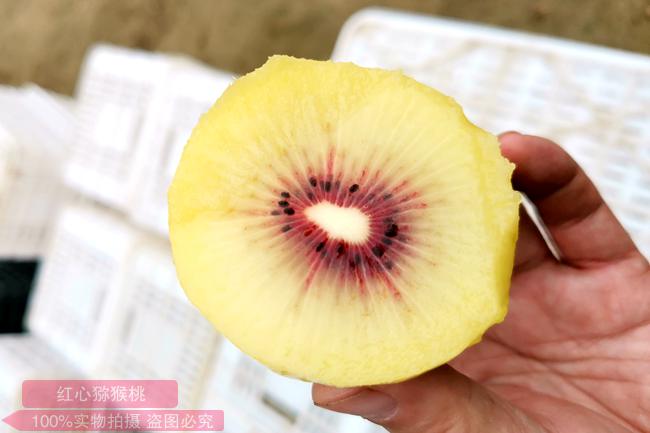
▲redkiwifruit▲
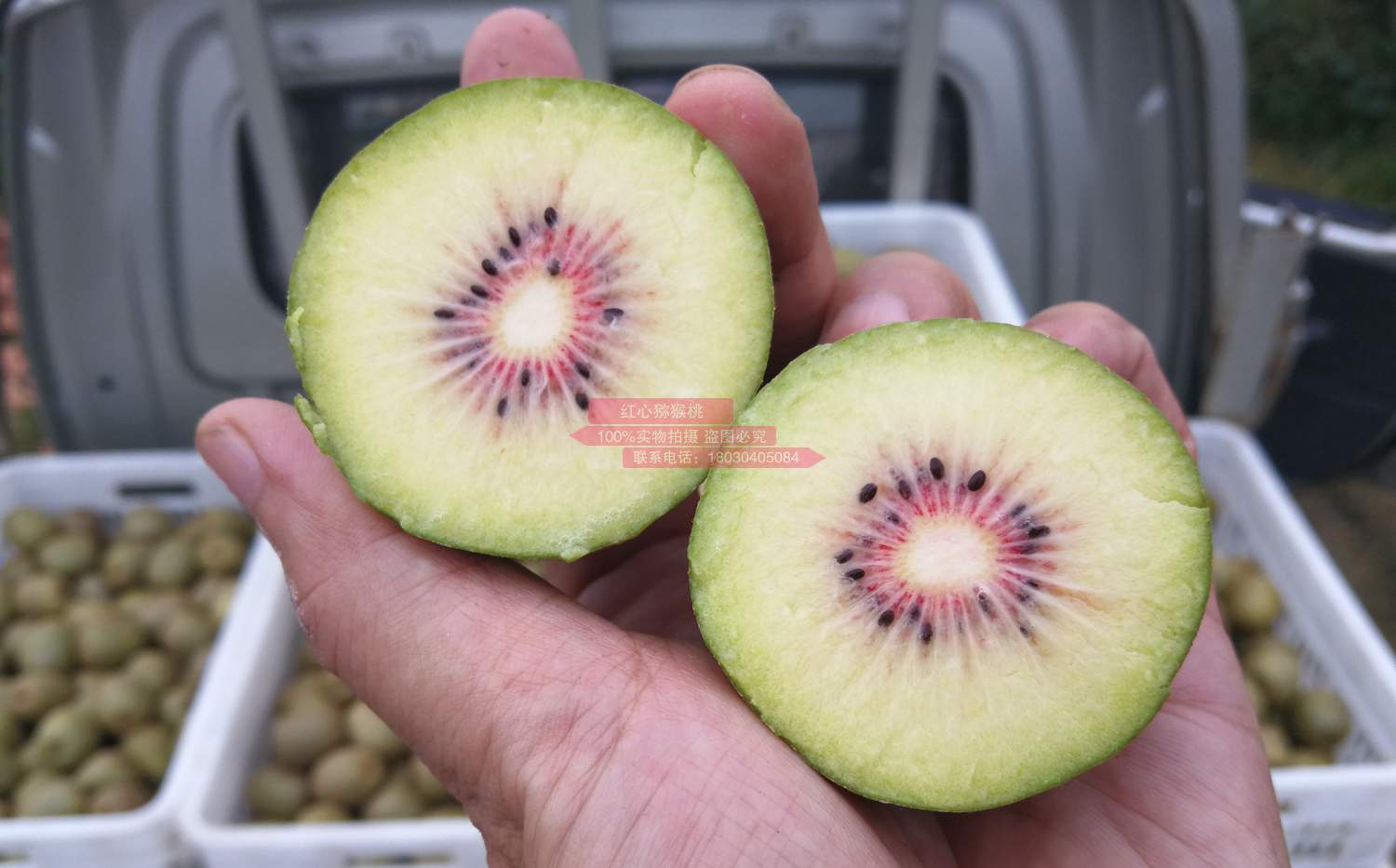
▲redkiwifruit▲


